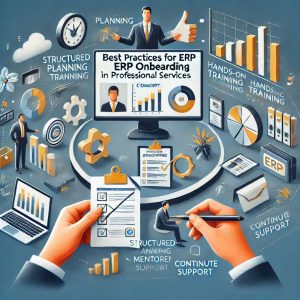Selecting an Enterprise Resource Planning (ERP) system can make or break your business’s digital transformation journey. In this comprehensive guide, we’ll walk you through the essential steps to choose the perfect ERP solution that aligns with your business goals and budget. Whether you’re a growing startup or an established enterprise, this actionable framework will help you make an informed decision.
What is an ERP System?
An Enterprise Resource Planning (ERP) system is a comprehensive software solution that integrates core business processes into a single platform. Modern ERP systems help streamline operations, improve data visibility, and drive business growth through automated workflows and real-time analytics.
Key Benefits of Implementing an ERP System
- Streamlined business operations across departments
- Enhanced data accuracy and real-time reporting
- Improved customer service and satisfaction
- Reduced operational costs through process automation
- Better inventory management and supply chain visibility
- Scalable solutions that grow with your business
Step-by-Step Guide to ERP Selection
1. Define Your Business Requirements
Before evaluating ERP vendors, clearly outline your organization’s needs:
- Identify current operational pain points
- List must-have features for each department
- Determine integration requirements with existing systems
- Calculate your total user count and access requirements
2. Establish Your Selection Criteria
Create a comprehensive evaluation framework considering:
- Industry-specific functionality requirements
- Cloud-based vs. on-premises deployment options
- Mobile accessibility and user interface
- Data security and compliance features
- Integration capabilities with third-party tools
- Multi-language and multi-currency support
3. Research and Evaluate Vendors
When assessing potential ERP providers, consider:
- Vendor reputation and industry experience
- Customer reviews and case studies
- Implementation methodology and timeline
- Support services and training programs
- Total cost of ownership (TCO)
- Future development roadmap
4. Compare and Shortlist Solutions
Create a detailed comparison matrix including:
- Feature alignment with requirements
- Pricing structure and hidden costs
- Implementation timeline
- Customization capabilities
- User training and support options
- Scalability potential
Common ERP Selection Mistakes to Avoid
- Overlooking user adoption challenges
- Underestimating implementation costs
- Focusing solely on price rather than value
- Neglecting mobile accessibility requirements
- Insufficient vendor due diligence
- Inadequate stakeholder involvement
ERP Implementation Best Practices
Ensure a successful ERP deployment by:
- Developing a comprehensive change management strategy
- Creating detailed implementation timelines
- Establishing clear communication channels
- Planning thorough user training programs
- Setting realistic expectations and milestones
- Monitoring system performance post-implementation
Calculating ROI for Your ERP Investment
Consider these factors when evaluating the return on investment:
- Direct cost savings from process automation
- Improved operational efficiency
- Reduced inventory carrying costs
- Enhanced customer satisfaction and retention
- Better decision-making through data analytics
- Increased employee productivity
Final Thoughts
Choosing the right ERP system is a crucial decision that requires careful consideration of your business needs, budget, and growth plans. By following this comprehensive guide, you’ll be better equipped to select an ERP solution that drives your business forward and provides lasting value.
Need Help Selecting the Right ERP System?
Our team of experts can guide you through the ERP selection process and ensure you make the best choice for your business. Contact us today for a free consultation.




